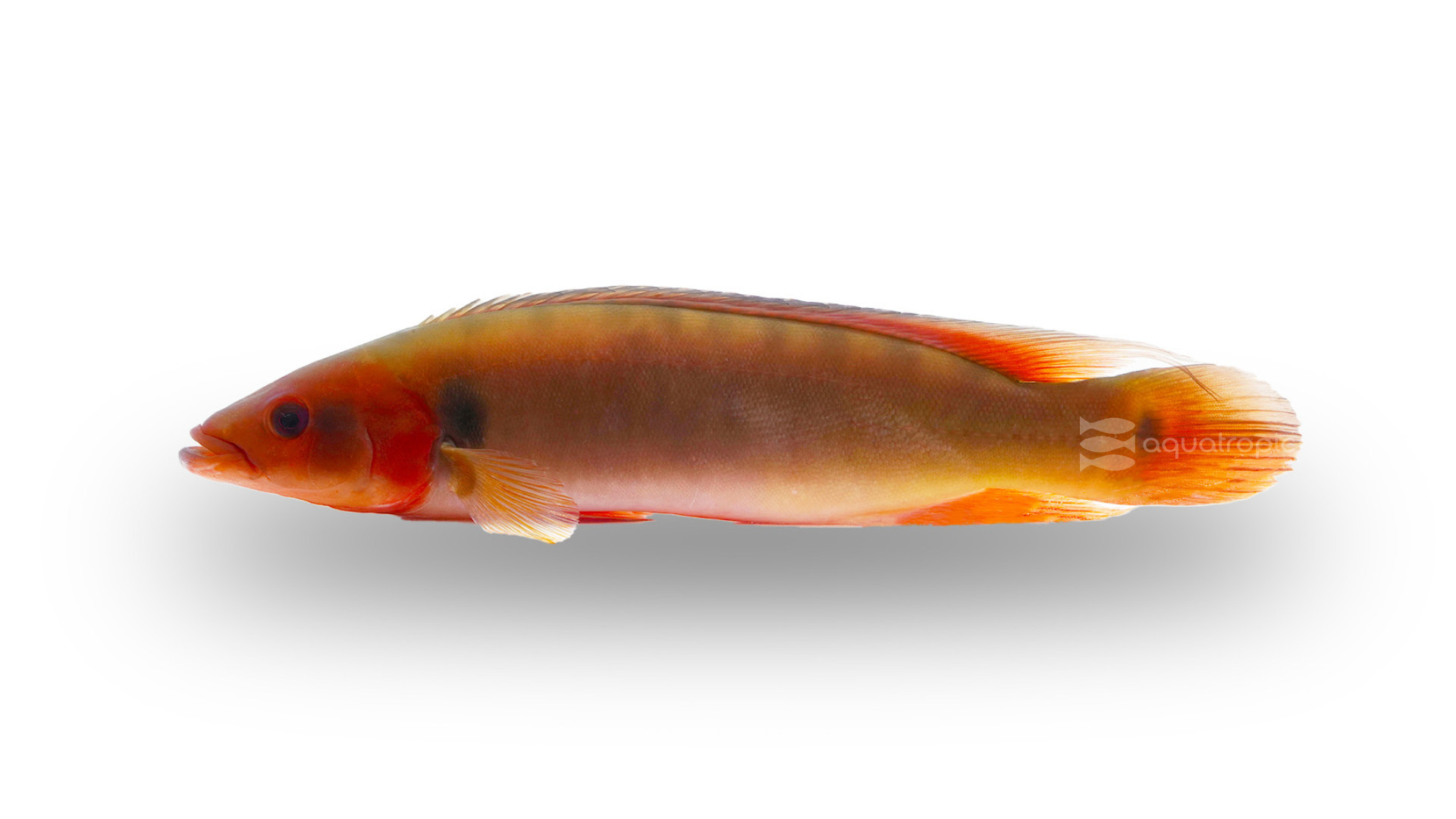Red Pike Johanna, or Lenticula Pike? Both!

Crenicichla johanna is a common South American Cichlid, found in wide range of habitats; they can be found in “black water” as well as fast, clear running streams throughout multiple river systems. They are easy to care for, and as would be expected from their varied homes, adaptable to many different water profiles. The females of the species are slightly smaller averaging about eight inches long and are more colorful. The males average a bit under ten inches long and while slightly less colorful, usually have stronger markings, the most prominent of which is the wide bar running the length of the fish. Both the male and the female will have a golden/tan or grey body with a dark gray / black stripe and reddish fins.
The common name for Crenicichla johanna is usually the “Red Pike Johanna,” but it also gets called “Lenticulata Pike,” and “Grey Pike Cichlid.” Interestingly, this fish is a much more common addition to aquariums outside north America and has dozens of common names that aren't English, though many of them translate to roughly the same thing. A couple interesting ones include Palettisukkula ahven, which means “Grey Shuttle Perch” in Finnish, and the Germans call it Grauer Kammbuntbarsch, or “Grey Comb Cichlid.”
Like many South American “Pike Cichlids,” which is how we commonly refer to anything in the genus Crenicichla, they are somewhat uncommon in the aquarium hobby. They are almost universally wild caught, which limits supply and their largish adult size plus voracious appetite for smaller fish limits their usage in community minded tanks. This is somewhat of a shame. They are easy to keep, very fun to feed and interactive both with their keepers and their environments.
By most aquarium standards, this is a large fish at adulthood, and needs a big fish tank in the long run. Aquarists should look at a six foot long, 120-gallon tank as the minimum for grow out. They are not picky about water parameters and can be kept in moderate pH tanks that have either soft or hard water. The temperature should be in the mid 70s Fahrenheit. Most of the fish in this family like to root around and change their environments and the Red Pike Johanna is no exception. They will dig up sand, even move smaller rocks and other décor. They are not likely to bother plants on purpose, but any rooted plant will likely get dug up inadvertently. Better choices for plants are things that are attached to unmovable rocks and wood. They will appreciate caves large enough for them to hide in, and for those interested in attempting to breed them, this will be a requisite.
They are aggressive but can be kept with other larger fish of similar dispositions. Good choices would be other larger South American Cichlids. Smaller fish, even those up to a couple inches long are likely to become food for them. We've also come across display of them with a variety of loaches, sharks and plecos that have been successful long term.
Crenicichla johanna is very easy to feed, (too easy if you keep them with small unwary fish). In the wild they eat a wide variety of fish and small invertebrates. Your captive specimens will accept large sinking pellets like those from Nutramar without much fuss. They will also appreciate thawed frozen foods like appropriately sized shrimp and live foods treats like worms and feeder fish will be accepted with gusto. For the hobbyist that comes into a picky specimen, these live offerings will usually get them eating in no time.
As was referenced earlier, breeding the Red Pike Johanna isn't really done commercially, but hobbyists have done it successfully and this makes for an interesting challenge for more advanced aquarists. Adults will use the caves you provide for nesting, and they will prefer caves with limited water movement. Water quality should be pristine, and large water changes can help trigger spawning activity. There is some correlation with softer water and breeding success for other species of Crenicichla, and this also might be worth imitating. Large amounts of live food have also successfully been used as a trigger. Males will guard the cave and the female will tend to the eggs, which should hatch in less than a week and the fry should be free swimming a few days later. The fry of other Crenicichla species is very cannibalistic and we expect the same from the Red Pike Johanna. The fry will differentiate quickly on size, and these should also be separated from each other if you would like to keep an even sex distribution among the fry. The fry can take a fairly large food fairly quickly and should eat newly hatched brine shrimp (or similar sized food) without issue.
If you're looking for a neat predator fish, that gets big, but not ridiculously big and is rare in the hobby, the Red Pike Johanna should definitely be on your list. They are easy to keep, beautiful and engaging fish. If this sounds like just your cup of tea, then head over to your Local Fish Store and ask about getting you a sustainably sourced Crenicichla johanna from Aquatropic today!